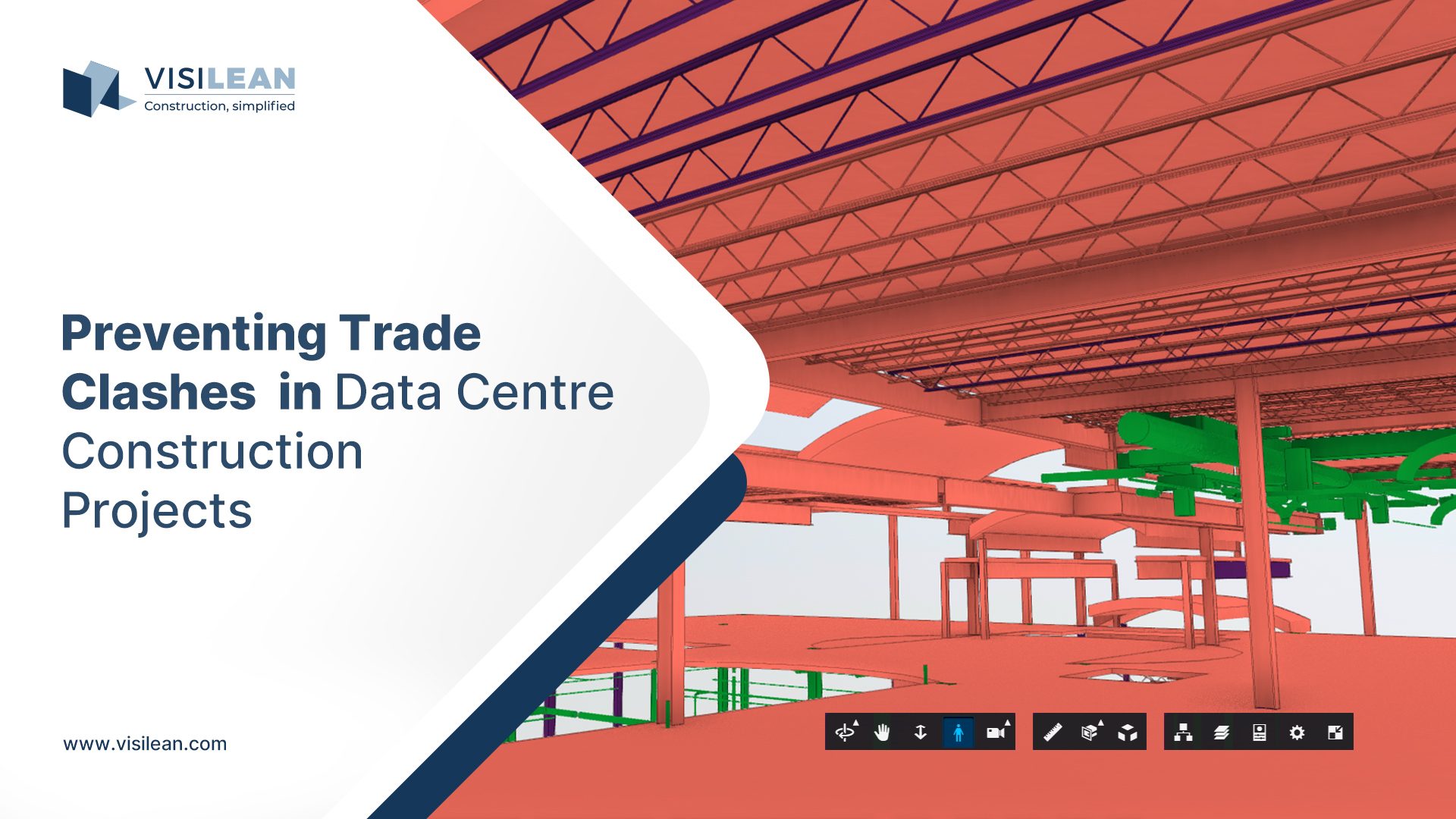The construction project management process involves the amalgamation of an array of services through the project phases of construction planning, designing, execution, and commissioning, aimed towards achieving project objectives such as management of quality, cost, time, and scope. Projects are complex in nature, with numerous construction management processes in different phases of the project. There is a complex relationship of numerous stakeholders -the top management teams, the planners, designers, construction managers, contractors, suppliers, and the site workers to be managed throughout the different phases of the project.
In this article, we’ll explore the following key elements of the Construction Project Management process:
- The decision-making process during project initiation and setting up the scope
- Collaborative Construction planning and scheduling
- Construction project monitoring and reporting
- Managing changes and risks in construction projects
- Effective communication and collaboration in construction management
- Strategic implementation of the correct methods for managing construction projects
- Adopting Lean workflows for improved project execution
- The importance of people and processes in project management in construction
Construction Project initiation and setting the scope
This is one of the most important phases of the project, where the feasibility of executing the construction projects is analysed. It is necessary to agree on the scope of work to be performed, have clarity on the best construction project management processes to be adopted throughout the project lifecycle and make sure that all the stakeholders are aware of these decisions.
The decision-making process involves an extensive construction project planning exercise, and one has to make sure that there is involvement of the respective people to set the strategies right. The communication plan between the top management and the different stakeholders in the different construction phases is something that is overlooked due to the conventional project set-up, which completely ignores the flow of work.
Construction Planning & Scheduling
Any construction project begins with the development of a detailed construction phase plan setting high-level targets for the teams to successfully complete the project within the planned scope, budget, and cost. Even with extensive construction phase plans being prepared by the masterminds of the project, the majority of them fall back due to various challenges and complexities involved, depending on the scale of the project.
77% of the megaprojects around the globe are behind the schedule and 20% of the large projects typically take 20% longer to finish than scheduled.
McKinsey Global Institute
These stats reiterate the fact that even with detailed construction planning practices, projects tend to have the challenges of dealing with scope, cost, and schedule overruns.
Conventional planning, based on high-level estimates from top management, can often be unrealistic, as it doesn’t consider site-specific conditions or input from those directly involved in the work. This top-down approach puts pressure on workers and leads to poor communication, resulting in revisions and delays.
Challenges with the Conventional Top-Down Approach,
- Unrealistic project plans that don’t account for site conditions or team inputs
- Siloed planning based on assumptions
- Poor communication leading to multiple, inconsistent plans
- Constant pressure on workers to meet unrealistic targets
The Bottom-Up Approach: A Solution to Conventional Challenges
So, the solution for this is to basically balance the push with the pull. We get the people who have the maximum involvement in actually completing the task to get involved in the construction planning processes. This method is called bottom-up planning, where the actual work crew breaks down the tasks and commits to them, and there is a collaborative environment where the people review the constraints and make reliable construction plans.
Read more about uniting top-down and bottom-up planning approaches.
Role of construction project management software
We know that we have various construction management software solutions from Primavera and Excel to Microsoft Project, and yet we face all the challenges we discussed. So, what are we missing here? Even with the best construction project management tools on board, we are missing the workflow that facilitates a collaborative process that would bring both the top-down and bottom-up plans into sync. This would look something like,
- Top management defines the Contractual milestones.
- Contractors and planners are breaking the construction phase plan into manageable tasks.
- Site teams define a clear look ahead and commit to their work. Making sure they have everything on board to maintain the flow of work.
This way, both the top level and the site teams are on the same board, and all have clarity on what needs to be done, what has been done and a set feedback mechanism to review what is stopping their progress and thus paving the way for continuous improvement.
If you are interested in merging your top-down plans with your bottom-up plans, start a fully featured free demo with VisiLean at – https://visilean.com/demo/
Construction Project Monitoring and Reporting
Once the project plans are set and the execution at the site kicks off, the next biggest task for every stakeholder on the project is to stay on track with the schedule. We measure the progress and the status of the work by monitoring the work done, and the people performing the tasks generate various construction reports. The reporting plans and the frequencies, the mode of reporting, and the documents required are all well planned in advance to submit to the top management.
All this is good, but do you wonder how much time is spent at the construction job site generating reports – site diaries, daily progress reports, updating spreadsheets daily, and eventually generating hundreds of reports for every single project? There is just so much manual reporting by the crew- filling checklists, pour cards, attendance forms, and the list goes on. This gets passed on to the manager preparing the monthly reports to be submitted to the top management.
Imagine the plight of a construction manager handling 10 different projects. The whole process of generating tons of reports is one of the biggest wastes in the construction process. Instead of focusing on the actual work to be done, the construction manager attends phone calls and generates reports that just pile up at the office table.
52% of rework is caused by poor project data and miscommunication.
The solution is simple – Instead of getting into this endless loop of phone calls and WhatsApp messages, it is necessary to set a workflow and automate the whole construction reporting with the help of suitable construction management software solutions. The project stakeholders must have the power to report their concerns at ease, notify their teams and get their queries addressed at the shortest time possible. A lot of time is wasted in just communicating the site issues to the office, and thus, it is essential that the construction project management tools used bridge the gap between the site and the office.

VisiLean is one of the construction project management software solutions that gives the power of reporting to the people at the job site. With a dedicated construction management mobile app – Livesite, the crew at the job site can give real-time status reports and stay connected to the office. To experience the power of real-time construction reporting and to give instant project updates, download the LiveSite app –
Android App – https://play.google.com/store/apps/details?id=com.visilean.livesite
ios App- https://apps.apple.com/in/app/livesite/id1533646047
LiveSite is an innovative cloud-based construction management service. Based on Lean principles, LiveSite offers a highly intuitive way to manage your construction projects. The LiveSite app enables field-based access to the construction tasks, including task status management, snagging (or issue list), access to drawings and specifications, communication and photo upload.
Managing Changes and Risks in Construction Projects
Changes occur for various reasons in construction projects, the most common being changes in specifications, design, or execution itself. They occur in all forms – sometimes client information is missing, sometimes the design specifications and some changes are due to changes in external site conditions and so on. All these ultimately end up affecting the schedule, cost and the entire flow of the construction project, leading to time and budget overruns. The reasons for these changes and revisions occurring cannot always be predicted, but the construction plans can definitely be formulated in a way that accounts for such buffers. It is absolutely necessary that the construction project planning processes are not just based on assumptions but include all the stakeholders.
Average of 35% of all construction projects have a major change.
Project analysis group
We all know that changes and risks are to be identified, reported, and analysed, and actions must be taken on them as soon as possible. While this is something that is common, the overall management processes involved matter the most. Things that most must focus on in the construction management process are –
- Decision-making processes
- Involvement of the right stakeholders at the right time
- Avoid planning in Silos – rather, try to integrate them to gain more clarity and predict the risks and changes
- Avoid changes as far as possible with the help of technologies
- Collaborate and set up communication plans with the team to address these changes
As we all know, changes and risks are part of the project. Hence, it’s up to us whether we want to change the construction management processes that address these changes or let the changes keep affecting our workflows.
Read more about it at – https://visilean.com/blog/change-management-managing-constant-revisions/
Communication and Collaboration in Construction Project Management
Setting clear communication and collaboration plans for efficient construction project management is one of the things that is overlooked in the industry. We spend hours together putting up a construction master plan, but we never plan how we will actually communicate with the project teams. Collaborative planning is achieved by bringing the right people together at the right time with the right construction management solutions.
We spoke about the bottom-up approach of getting your site teams involved in your planning; this way, the teams get clarity on the work, review the status, visualise milestones and discuss the issues. It is necessary to simplify the management process and workflows, remove complications and hurdles that disrupt the flow of information, and improve communication between all project stakeholders.
VisiLean is a cloud-based construction management platform that focuses on collaborative planning by addressing the core issues of construction. Head over to https://visilean.com/ to digitalise your workflows and maximise your results.
Strategic implementation of the correct methods
The adoption of any methods for construction management would require a strategic implementation to help the project and the organisation overall, which includes –
- Change in behaviour at both individual and organisational levels when adopting new, efficient workflows.
- Overcoming resistance towards the hurdles faced in the initial adoption of better technologies and the construction process
- Not expecting immediate results and putting in consistent efforts to strive for practical improvements in stages.
- Needs amalgamation of the right process, people and tools to achieve benefits
If you have decided to implement the proper methods to digitalise and improve your construction project management process, sign up for a fully featured free demo with VisiLean at https://visilean.com/demo/
Adopting Lean Workflows in Construction Project Management
Adopting Lean workflows ensures that your construction processes facilitate the smooth execution of activities on-site with minimum wastage of resources while ensuring the needs of the supply chain are delivered at every stage. This requires a thorough review and ironing out of existing practices and workflows.
We have to address the core production processes. For example, Lean production management involves a dedicated make-ready process to ensure the tasks are checked for prerequisites, such as material, space, and manpower, before the work is started on-site. This considerably minimises unexpected stoppages and issues during the execution of the work, ensuring production flow and smooth handovers. The focus is more on generating value for the client by ensuring information flows.
With lean workflows in our current processes, we make sure that-
- Downstream players are involved in the planning process.
- We take commitments from the last planners.
- We make sure that there is no disruption of work by following a dedicated make-ready process.
- Strive towards complete improvement by reviewing the work frequently and taking action.

VisiLean is a dedicated Lean-BIM integrated construction project management solution with features facilitating true collaboration and seamless communication. Head over to https://visilean.com/features/ to learn about the Lean BIM features facilitating construction projects.
Ultimately, it’s the people and not the software.
You can have the best construction management software with you, but ultimately, it’s the people who will make things happen in your project. One can have the best technologies set up in their projects, but if people are resistant to change and unwilling to adopt new construction processes, there will be no improvement. The more we empower the stakeholders by understanding their needs and providing them with the right processes and tools to manage their workflows, the more benefits we realise in our construction projects.
We definitely cannot expect the technology to do the magic for us in improving our project performance. The best way to implement any construction management software solution to solve your problems is to first realise the crux of the problem and adopt strategies and supporting processes.

If it were just about the adoption of tech, with numerous construction project management solutions in the market, all projects would have been completed on time with absolutely no budget overruns.
One of the most utopian technologies in our industry is BIM for construction management. This has set high expectations that the construction industry expects BIM to do the magic to improve project performance. BIM has become a buzzword and is considered a central vehicle for increasing project performance.
There is no doubt that BIM has revolutionized the industry, as in recent times, there has been an exponential growth in adoption of BIM from just 13% in 2011 to 73% in 2020.
Way forward
At VisiLean, we strive towards simplifying the construction management process and workflows, removing complications and hurdles that disrupt the flow of information, and improving communication between all project stakeholders.
VisiLean helps you transition seamlessly towards Lean digitalisation. With dedicated support and excellent system interoperability, we respect your teams’ familiarity with existing platforms and workflows, promising smooth onboarding and transition across the organisation, one step at a time.
Address these key aspects in your construction project management process by starting a fully featured free demo at https://visilean.com/demo.
Want to know more about us? Head to https://youtu.be/vALoybf0zpM or visit our website, https://visilean.com, to learn about all our features!





